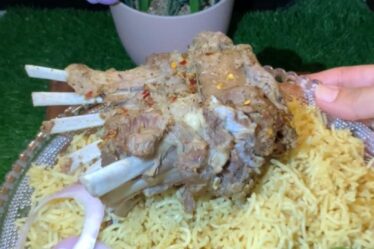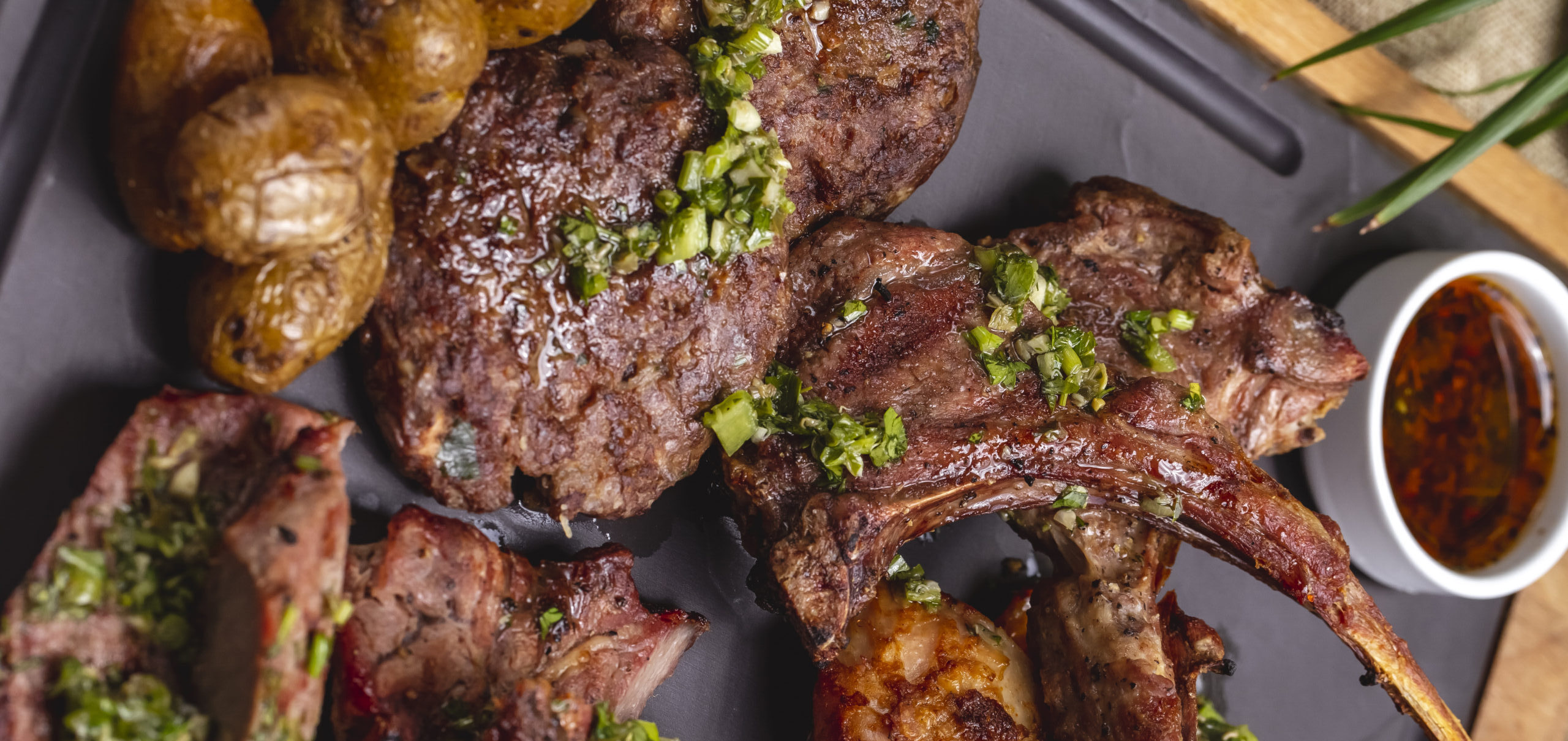
Mutton Paya Recipe – It is a cherished South Asian delicacy, that holds a special place in the hearts of food enthusiasts for its rich flavors and nutritional benefits. This traditional dish, featuring tender goat trotters simmered in a fragrant blend of spices, is not just a meal but an experience. Let’s delve into the intricacies of this recipe, exploring its taste, health benefits, and why it’s adored by many.
The essence of mutton paya lies in its robust and aromatic flavors. The slow cooking process allows the spices to meld seamlessly with the tender meat, resulting in a dish that tantalizes the taste buds. The combination of green chilies, garlic, ginger, and a medley of aromatic spices creates a symphony of flavors that is both satisfying and deeply comforting. With each bite, you’ll experience a burst of savory goodness that lingers on the palate, making mutton paya a true culinary delight.
Health Benefits
Beyond its delectable taste, mutton paya also offers numerous health benefits. Trotters are rich in collagen, which supports joint health and promotes glowing skin. Additionally, the spices used in this recipe, such as ginger, garlic, and turmeric, boast anti-inflammatory and antioxidant properties, bolstering the immune system and aiding digestion. The nutritious broth derived from the simmering process is not only flavorsome but also hydrating and nourishing, making mutton paya a wholesome meal choice.
Joint Health
Mutton paya is rich in collagen, a protein that supports joint health. Collagen helps maintain the integrity of cartilage, which cushions the joints and promotes flexibility. Regular consumption of mutton paya may contribute to reduced joint pain and improved mobility, making it beneficial for individuals with conditions like arthritis.
Skin Health
Collagen, abundant in trotters, is also essential for maintaining youthful and radiant skin. It helps strengthen the skin’s structure, improving elasticity and reducing the appearance of wrinkles and fine lines. Including mutton paya in your diet may promote skin hydration and firmness, leading to a glowing complexion.
Digestive Health
The spices used in mutton paya, such as ginger, garlic, and turmeric, have long been celebrated for their digestive benefits. Ginger aids in digestion by stimulating the production of digestive enzymes and reducing gastrointestinal discomfort. Garlic exhibits antimicrobial properties that support a healthy gut environment, while turmeric helps alleviate digestive issues and may reduce inflammation in the digestive tract.
Mutton paya, when consumed as part of a balanced diet, can contribute to heart health. The lean protein found in trotters helps maintain muscle mass and supports cardiovascular function. Additionally, the spices in mutton paya, such as cloves and cinnamon, have been associated with improved blood circulation and heart health.
Immune Support
The aromatic spices and herbs in mutton paya possess potent antioxidant properties that help strengthen the immune system. Garlic, in particular, contains compounds like allicin, which exhibit antimicrobial and immune-boosting effects. Regular consumption of Mutton Paya Recipe may enhance immune function, helping the body fend off infections and illnesses.
Nutrient-Rich Broth:
The broth derived from simmering mutton paya is a nutritional powerhouse, packed with vitamins, minerals, and amino acids. This flavorful liquid not only provides hydration but also delivers essential nutrients that support overall health and well-being. Drinking the broth may help replenish electrolytes, promote hydration, and support cellular function.
Bone Strength
In addition to collagen, mutton paya contains essential minerals like calcium and phosphorus, which are vital for bone health. Regular consumption of this dish may help prevent osteoporosis and maintain bone density, reducing the risk of fractures and promoting overall skeletal health.
Why I Love It
As a lover of traditional cuisine, mutton paya holds a special place in my culinary repertoire. The ritual of preparing this dish, from cleaning the trotters to simmering them with aromatic spices, is a labor of love that yields unparalleled satisfaction. The rich aroma that fills the kitchen as the paya cooks evokes fond memories of family gatherings and festive occasions. Moreover, the hearty flavors and nourishing qualities of mutton paya never fail to uplift my spirits and satiate my cravings, making it a cherished favorite.
Conclusion
In conclusion, mutton paya is more than just a dish—it’s a celebration of culture, flavor, and well-being. Its irresistible taste and myriad health benefits make it a culinary gem worth savoring. Whether enjoyed as a comforting meal on a chilly evening or served at festive gatherings, mutton paya never fails to captivate the senses and leave a lasting impression. Embrace the tradition, indulge in the flavors, and relish the goodness of mutton paya—a true testament to the culinary heritage of South Asia.

Mutton Paya recipe | The Best Paya recipe
Ingredients
- 12 goat trotters (paya), cleaned and cut, washed with lukewarm water
- 8 whole green chilies
- 13 cloves garlic, whole
- 1 inch piece of ginger
- 2 curry leaves
- 5 cloves
- 1 cinnamon stick
- 8 whole black peppercorns(kali mirch)
- 1 whole onion
- 2 liters water
For the masala
- 1 onion, sliced
- 6 whole green chilies
- 2 tbsp ginger-garlic paste
- 1 tbsp green chili paste
- 1 tbsp red chili powder
- 1 tbsp garam masala
- ½ tsp turmeric powder
- 1 tsp salt or to taste
Instructions
- In a pressure cooker, add the cleaned and cut trotters along with whole green chilies, cloves of garlic, ginger piece, aromatic spices (curry leaves, cloves, cinnamon stick, black peppercorns), and a whole onion.
- Pour in 2 liters of water and pressure cook for 20 minutes after the whistle blows.
- Meanwhile, prepare the masala. In a pan over medium heat, add sliced onions and cook until brown.
- Add whole green chilies, ginger-garlic paste, and green chili paste to the pan. Stir well.
- Mix in the seasoning mix: red chili powder, garam masala, turmeric powder, and salt. Cook for 1-2 minutes.
- Once the pressure cooker is done, add the boiled trotters to the masala in the pan. Cook for an additional 5 minutes.
- Pour in the trotter stock from the pressure cooker into the pan. Cover and cook for another 10 minutes.
- Garnish with cilantro and sprinkle some garam masala. Serve hot with naan and enjoy your delicious mutton paya!
Video
Notes
- To ensure that the mutton trotters are tender and flavorful, consider cooking them slowly over low heat
- Taste and adjust for salt.
FAQs: (Frequently Asked Questions)
Can I use lamb trotters instead of goat trotters?
Yes, lamb trotters can be used as a substitute for goat trotters in this recipe. However, keep in mind that the cooking time may vary slightly.
How can I make mutton paya less spicy?
To reduce the spiciness of mutton paya, you can adjust the quantity of green chilies and red chili powder according to your preference. Additionally, removing the seeds from the green chilies can help temper the heat.
Is mutton paya suitable for a low-carb diet?
Yes, mutton paya can be enjoyed as part of a low-carb diet. Since it primarily consists of protein and healthy fats, it can be a satisfying and nourishing option for those following a low-carb eating plan.



